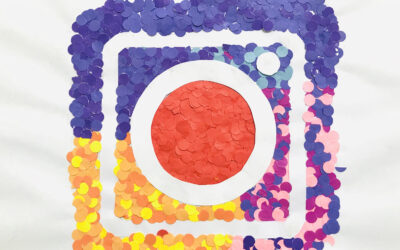Graphic Design is a broad and dynamic field. It’s also one of the most exciting and rewarding professions you can enter into. Whether you’re interested in graphic design as a hobby or want to make it your career, this ultimate guide will give you everything you need to know about the profession. However, the world of graphic design can be confusing and overwhelming. There are many different types of graphic designers, each with their areas of expertise. This blog post will break down all those different roles and explain what they do daily. The article below covers everything from entry-level education requirements to job outlooks for these professionals in the future. If you’re interested in learning about what being a graphic designer means or want to break into the industry, read on!
Graphic Design Definition
Graphic design is the process of creating and combining images, symbols, and text to create visual communications and to inform, educate, persuade and sell. The field of graphic design is incredibly broad, with many sub-fields that focus on different areas such as branding, web design, information design, etc. Graphic design is different from visual communication or web design. Visual communication is focused on the content, the message that you want to get across, and the story. Graphic design is about how you tell that story. Graphic designers are responsible for everything from creating logos for companies to designing posters for concerts. Their work can be seen everywhere from advertisements to cereal boxes. The term “graphic design” can be confusing because it covers so many different disciplines.
What does a graphic designer do?
Graphic designers are responsible for communicating a message or creating an image through the use of visual elements. They use a variety of tools to create designs, including computers, software, and traditional arts and crafts. A graphic designer may work with a team to create images and designs for a variety of media, including websites, advertising, newspapers, magazines, and books. They might also create packagings, such as boxes or labels, or visual displays, such as exhibits or signs. Other tasks that a graphic designer might do include creating logos, drawings, or diagrams, or taking photographs or videos.
Types of Graphic Designers
There are tons of different types of graphic designers. Some of the most common are listed below. Advertisers create the images used in advertisements for newspapers, magazines, television, and other media. They choose the images and text that are designed to persuade people to buy a product or service. Brand designers create logos and other visual designs for companies that represent the company’s brand and help customers identify products. They also create other visual communications, such as signs, pamphlets, or other materials, for the business. Copywriters write text to be used in advertisements and other marketing materials, such as product labels or brochures. They create the message that an advertisement is intended to convey. Graphic designers work in a variety of industries, including advertising, the arts, education, health care, information technology, publishing, public relations, and sales.
Graphic design jobs and requirements
The most common route into the profession is with an undergraduate degree. Many online graphic design programs are growing in popularity for those who want to get into the industry quickly. If you want to be a traditional graphic designer, be prepared to spend four years at a design school. Most design programs combine a variety of artistic and technical courses, such as design history, art, computer graphics, and business. To succeed in this field, you should have excellent creative and technical skills. You should also have strong communication and problem-solving skills. Being able to work well in a team environment is critical as well.
Conclusion
Graphic designers are more important to society than ever before. With our society becoming more and more visually focused, the need for designers to create compelling images and visuals has never been greater. The field is growing and evolving with new technologies and techniques being developed every day. If you have a passion for visual communication and want to make a difference in the world, becoming a graphic designer is an exciting and rewarding career path.



